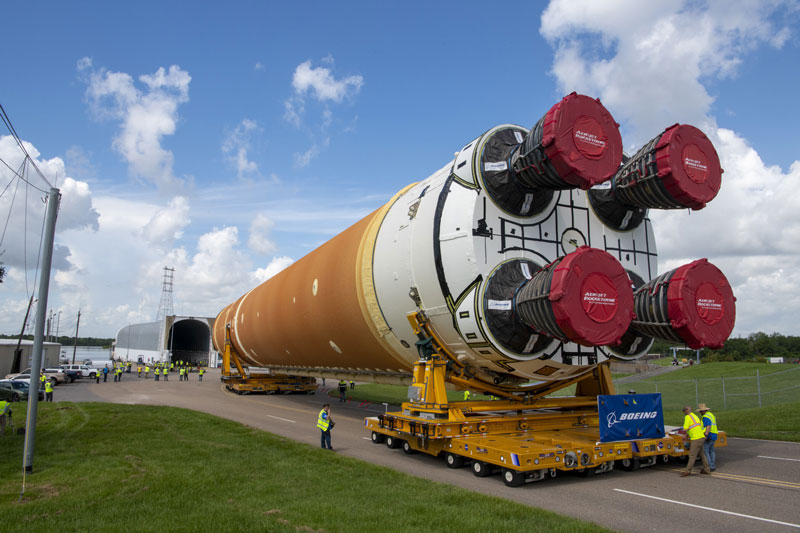Boeing has announced that the first stage of the SLS rocket for the Artemis II mission has been completed. Soon it will be loaded onto the Pegasus barge and delivered by sea 1.5 thousand km to the John F. Kennedy Space Center for rocket assembly. The component created by Boeing is the largest in the rocket, reaching a height of 65 m. The stage carries four RS-25 engines, which, in combination with two solid rocket boosters, will provide the most powerful thrust.

Receive and sign. Image source: Boeing
The Boeing company participated in delivering people to the Moon in the 60s of the last century and is creating rockets to return people to the Moon in new realities. The successful launch of the SLS rocket on the Artemis I mission two years ago confirmed that the company, its colleagues and NASA can still build rockets that can carry people and equipment to the Moon, Mars and beyond in a single launch.
At the Space Center. Kennedy’s first stage will be equipped with an upper stage (intermediate cryogenic propulsion stage, ICPS) manufactured by United Launch Alliance. The Orion spacecraft, created by Lockheed Martin Airbus Defense and Space Arianespace, will be installed on the ICPS block. And additional launch power for the SLS rocket will be provided by two side boosters from Northrop Grumman.
The launch of the rocket (the Artemis II mission) with four astronauts on board is expected to take place in 2025. NASA astronauts Reid Wiseman, Victor Glover, Christina Koch and Canadian astronaut Jeremy Hansen will orbit the Moon for several days before returning to Earth. This will be the first human flight to the Moon in more than 50 years, which will become a significant milestone in a new round of development of earthly astronautics.